
Check this post for excellent suggestions for Back to School Activities, ready to print and apply to early graders.
It is important that teachers have in mind ideas to welcome their students, because only in this way they felt loved and with that, learned more and more. To help them, we selected some options for activities back to school, check out:
Index
Space: Library or reading corner.
Carpet and/or pillows and/or fabric, books with stories that relate to the children's feelings during the adaptation period.
Kits with objects that feed the symbolic game. Examples of kits: children's supermarket cart with food packaging or cleaning and personal hygiene products, all clean; costumes; briefcase with tools that imitate those used in mechanical workshops; box with kitchen utensils; bag with brushes and hair combs, jars of cream and shampoo.
Play with colleagues and express feelings about the adaptation process through different roles.
Place the kits scattered around the room. Let the children explore the kits, freely choosing the roles they want to play and the peers they want to play with. Carefully follow the plot of the stories created during the game. You can see if they express feelings related to the adjustment period and help them later by planning other activities.
Ask the children's parents what games they like best. After this survey, group the activities that most resemble those mentioned in different corners around the room. Example: in a space, you can put tables with paper and pencils to draw, letting the children who enjoy this type of activity gather there. In another corner, group toy cars; in the middle of the room, put dolls. Children will look for the activities they are used to at home, feeling safe. It is also possible, simultaneously, to present a new activity in another place in the room.

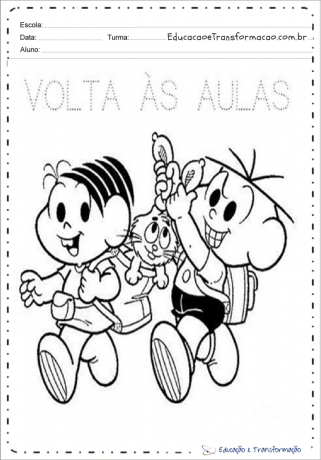



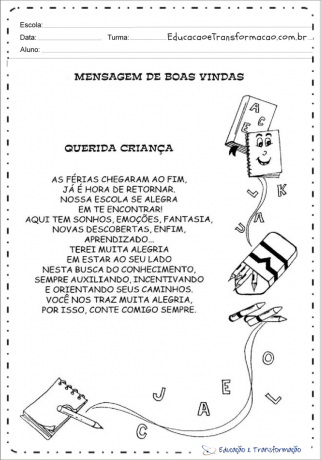
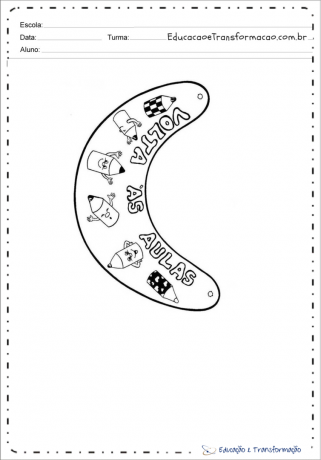
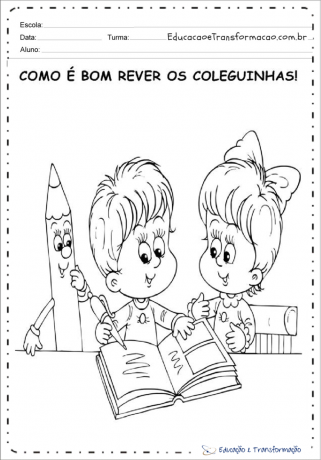


Also check: DYNAMIC: Dance in the Newspaper – Back to School



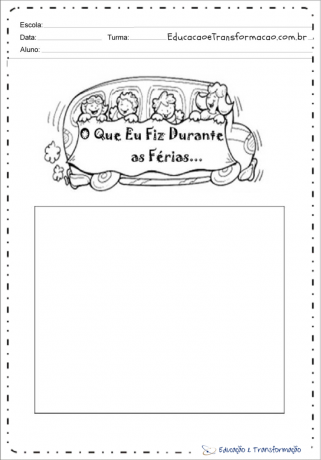
I also recommend: Activities pass time for back to school

Always thinking of making it easy for you, we decided to make all the "Back to School Activities" shown above for download in PDF. To have access to the complete material, check the following link:
Material
Reflect on your own artistic production, organizing points, lines and traces on paper; and develop spatial vision and notions of proportion.
Have the children each draw a picture. Theme is free. With the productions ready, propose that they copy their own drawings on a larger or smaller scale. To do this, teach them how to enlarge or reduce using graph paper.
Develop perception and ability to represent figures, stimulate imagination, memory and creativity.
Invite the children to create an artwork based on a template. It can be a scene from a movie, a landscape, an object present in the classroom or even details of the body itself, such as the shape of the feet and hands, for example. Highlight the fact that the artistic representation is different from a photo; show examples of subjects portrayed in very different ways and styles by various artists. Then display the class work on a clothesline or on a classroom wall and talk to the group about the final result, highlighting (and valuing) the differences in the various ways of seeing and representing the reality.
Subscribe to our email list and receive interesting information and updates in your email inbox
Thanks for signing up.


